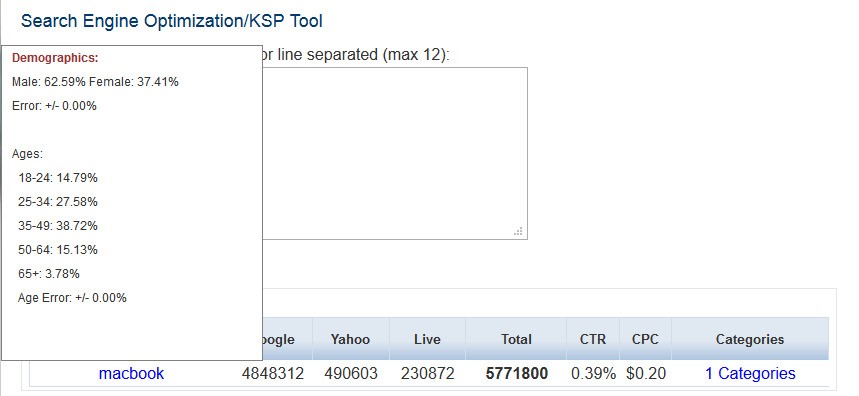Survival SEO: How to Do the Search Marketing of Tomorrow … Today
If you knew today what Google would be paying attention to a year from now, would you take steps to optimize in that direction? Of course you would. Recently, I presented a session at the Pubcon SFIMA Summit titled “Tomorrow’s SEO Today: Social Search and Beyond.” The topic lends itself to endless speculation about how a search engine might adapt its ranking factors, layout and features due to constantly changing devices and user behavior — I boiled my presentation down to three points that are essentially search marketing survival tips. Here’s what you should do today so your site’s search presence is alive and thriving in the future. Survival Tip #1: Know the Impact of Personalized Search
At that time, this theory was just materializing, but fast forward more than a decade later and it’s exactly what we’re seeing in personalized search. There is no question that intention is an integral part of search today. For example, is a user shopping or researching? What does user’s web history indicate? What’s the searcher’s location? All these factors are taken into account to determine a user’s intent. You and I can do the exact same search, but our results will be varied. The reason? We might have dissimilar search patterns, reside on opposite ends of the country and have different people within our social circles. All of these factors impact what we see in the SERP. Since personalization only keeps evolving, as a marketer you have to understand your customer and take the time to pinpoint the personas you want coming to your website. That is where keyword research becomes important; keyword research is one of the ways you can deal with personalization and attract the right type of web visitors. When you do your keyword research, pay careful attention to the demographics associated with each word and phrase. You need to be able to answer the question, who is searching this word or phrase and does it align with your target customer? For example, what age group searches that word or phrase? Are there more men or women doing that query? Some keyword research tools can give you this insight, such as our SEOToolSet® KSP tool. In the overlay below, you can see the type of information you would be delivered when searching for a keyword such as “macbook.” Once I know that the demographic is mainly men ages 35–49, I can tailor my message accordingly.
Survival Tip #2: Know How Social Signals Impact RankingsWhere social fits into the picture of search is where things get interesting. Social interactions — such as +1s, tweets, likes and comments — can go a long way in boosting credibility and trustworthiness in consumers’ eyes. Think of every social share as a vote of confidence for your business. As of right now, Google is not directly considering social signals in rankings (read more in “Google Not Considering Social Signals Currently“). However, that is today — who knows what tomorrow or next week will bring? What we do know today is that what happens as a result of social shares is what can impact rankings. For example, if you write an article and someone tweets it, your potential reach increases. Another person might see the tweet and choose to link to you from his or her website. If it is a high quality and relevant site, this link could be beneficial. It’s important to know how you are doing in the social space. You can use tools, such as FeedtheBot, to monitor the social activity on your website pages. You should also be using a social plugin that can be tracked in Google Analytics, such as ShareThis or AddThis. Plus, there are questions you should be able to answer, such as:
If no one is engaging with you or sharing your content, you need to rethink your approach, which leads to the next survival tip. Survival Tip #3: Publish the Right ContentWhile that seems like an obvious survival tip, many businesses miss the mark. They are not creating content that their customers truly care about. This concept goes back to an earlier point of knowing your customers. Think about their questions, concerns and interests, as that is what your content should be wrapped around. Once you create this content, push it out to the social networks to boost its visibility. We often utilize sponsored posts to reach even more people within our social networks. Without using promotion, your organic reach could be as little as 2 percent on Facebook, according to a recent study of over 100 brand pages by Social@Ogilvy. After publishing content and promoting it on social networks, you are not done. Your job then becomes to measure your success. Look at analytics and your backlink profile to see what type of impact your pages have made. You will likely begin to find a trend in the type of content that gets more engagement. You can check out the full presentation below:
Search is always changing and you have to look around once a while to see what is different. If you pay attention, you stand to succeed. If you need help future-proofing your SEO campaign request a free quote today. Bruce Continues the Discussion at #GROWCO14The industry is preparing for the social tidal wave and its impact on search. In fact, social media marketing budgets are expected to double over the next five years, according to SocialTimes.com. It’s no wonder why so many experts believe that the new era of search is and will be driven by social. Bruce is delving into this very topic at GROWCO — Inc. Magazine’s business conference series, kicking off today in Nashville. He will share his SEO insights alongside Duane Forrester of Bing, Manny Rivas of aimClear and Maisha Walker of Message Medium in “Search + Social: The Future of Your Business Online.” Bruce’s presentation will cover SEO strategies geared specifically for entrepreneurs. The power-packed conference will continue on throughout the summer, traveling to Chicago, Atlanta, Boston and Houston — get the whole story here. |
|
For permission to reprint or reuse any materials, please contact us. To learn more about our authors, please visit the Bruce Clay Authors page. Copyright © 2014 Bruce Clay, Inc.




 It was only a couple of years ago that “personalization” became a buzzword in search — but the concept behind it is much older. Back in 2003, John Battelle wrote a great article about the
It was only a couple of years ago that “personalization” became a buzzword in search — but the concept behind it is much older. Back in 2003, John Battelle wrote a great article about the 







